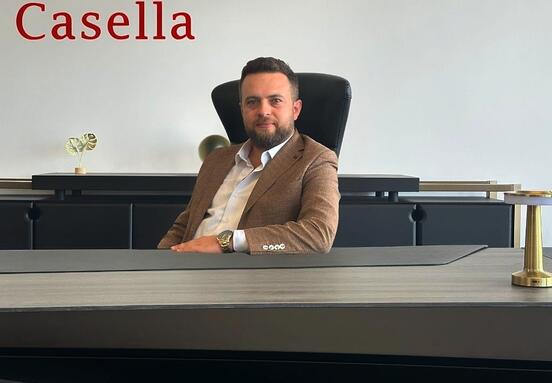1. Which trends define the real estate market this year?
Geopolitical events and inflationary pressures had a great impact last year and this year on all sectors of the real estate market in Europe, but in some markets of South-Eastern Europe, this impact was somewhat smaller and had a different direction depending on the sector we are talking about.
Last year had an unfavorable impact on the segment of the real estate investment market, and a decrease in turnover was recorded in the entire region, while in this year, we could see that situation is stabilized. Related to global challenges conected with interest rates and capital markets in general, several transactions were recorded in the area of Southeast Europe, such as the sale of Capital Plaza, a mixed-use building in Podgorica, the sale of the Belgrade Office Park business complex in Belgrade, as well as the sale of the Situla Business Center in Ljubljana. The transactions mentioned before, in which CBRE SEE provided advisory services, show that interest in Southeast Europe remains active with competitive yield levels. In the region of Southeast Europe, the greatest focus of investors is on office buildings, but increasingly on the logistics real estate sector, while in previous years the focus was primarily on the retail sector.
When it comes to the office real estate sector, during the last year there was a decrease in the vacancy rate of office spaces in all major capital cities in the region of South-Eastern Europe. Along with rising inflation, rent levels have come under enormous pressure, resulting in a jump in European markets. Combined with a lack of supply in the South East Europe region, several markets have seen an increase in rental levels.
The applied hybrid work policies, which have remained current after the COVID-19 pandemic, also influence the decision-making process on the required office sizes. As a result, coworking space continues to grow in most markets, proving that the flexibility of office space users and their workplace strategy is essential.
2. What are the trends in the office market this year when we are speaking about Croatia?
During the first two quarters of 2023, there was a noticeable decrease in available office space in Croatia, primarily in Zagreb, therefore the vacancy rate of office space reached a historical minimum of around 2% at the end of the second quarter.
The office space market in Zagreb has remained relatively stable since the beginning of the year when we talk about new office buildings in the market. During the past months, Matrix Phase C and Project 75, business facilities located in the extension of the East business district, i.e. one of the most sought-after business zones in the city, were completed. With this, Zagreb's commercial real estate market reached almost 1.2
million square meters. According to announcements, another 45,000 square meters of new office space is expected on the market this year, while another 42,000 square meters are planned for next year and over 60,000 square meters in 2025. This should significantly affect the activities and further development of the market, considering that due to the lack of new offers on the market, the activity mainly relies on the renewal of existing contracts. Most of the recently completed business buildings were pre-leased at the very beginning of construction.
Although, as in other parts of the region of Southeast Europe, there is considerable pressure to increase rents, when we talk about the second quarter of the Croatian business space market, stability was preserved, so the rent for class A office real estate amounted to an average of 15.5 euros per square meter on a monthly level, but there are also several properties on the market whose rent exceeds the above.
3. During this year, you worked on the realization of a very interesting project. What exactly is it about?
The support we provided to the Croatian brand in finding a way for further expansion in Europe is true proof that there are no borders for CBRE and that we put our expertise at the service of our clients, regardless of the task.
It is about cooperation with the Museum of Illusions and the search for new locations in Europe. For now, we have realized a space of 1,871 square meters in Copenhagen, thanks to the cross-border cooperation of the CBRE office. Demand in Europe is to find an adequate space for this type of activity, that is, large spaces in the central part of the city, which should meet all the necessary technical conditions. CBRE performed an analysis of the available spaces that would suit the purpose and agreed on the best lease terms.
4. In which direction will the market move in 2024?
Sustainable development and ESG have become one of the hot topics both in the global economy and in the real estate industry. The world we live in is changing at a high speed, so we are witnessing the accelerated evolution of ESG in the real estate industry. A few years ago it was "nice to have" adopted ESG values in business strategies, but today it has become an obligation. Investors and developers understand the seriousness and need for doing business and making decisions that are aligned with ESG values and that will bring them greater long-term profits and greater attraction among tenants.
In the region of Southeast Europe, sustainability is increasingly applied among developers and investors as business is rapidly changing to prevent climate change. According to the latest CBRE research data, there are more than 50 certified office buildings, as well as several retail establishments in the region. However, the increasing interest in this topic is visible in the plan for the office segment, where an increased number of projects that are planned to be certified is recorded. In addition, CBRE European research has shown that certified properties tend to fetch higher rents than non-certified properties. Thus, the demand for certified property grows from year to year, as does the awareness of business real estate users.
According to CBRE's European report 'Does sustainability certification in real estate pay off?', a certified office building benefits from increased comfort, lower operating costs,
improved corporate reputation, health, and productivity, which are included in the rental value. Our model showed that a 6% rental premium is achieved in sustainably certified office buildings compared to non-certified properties.







